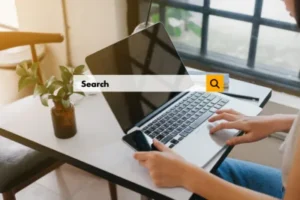With Windows 7 “end of life” quickly approaching, it is vital for businesses to come up with strategies to help transition their computer operating systems to the latest version – Windows 10. However, upgrading to a newer operating system at scale poses significant challenges. For one, it requires a lot of time to update every computer and train employees on how to use the new system. It can also be quite expensive, making it especially hard on smaller companies.
While migrating to a new operating system sounds daunting, the risks of sticking with an outdated system can be even worse as vendors drop their complimentary support over time. With no support from Microsoft, there is an increased risk of security breaches from hackers. Between finding someone who can provide Windows 7 support and dealing with problems associated with an unsecured system, you can expect to be paying a ton of money if you don’t make the switch now.
However, this transition doesn’t have to fill you with fear. With careful planning and the right help, you can easily update your OS to ensure proper security going forward.
What is Windows 7 End of Life And Why You Should Move Away From It
An operating system “end of life” date means the end of overall support for the software product. This includes regular security updates, customer service, or any other complimentary support. While you can technically still use Windows 7 after its end-of-life date, you will be putting your company at high risk. After January 14th, 2020, Microsoft will no longer update patches for free, leaving your business vulnerable to cyber attackers, phishing, and other breaches of security should your organization forgo paying for support. However, without complementary support from Microsoft, you’ll be hit with higher operating costs to keep Windows 7 running throughout your company.
Benefits of Windows 10
Security
Keeping in line with the risks outlined above, the switch from 7 to 10 increases security across your company’s computers. Unlike Windows 7, Windows 10 guarantees feature updates, quality updates, insider previews and more. Windows 10 also comes with an array of new, artificially intelligent security features such as Windows Defender Credential Guard and Windows Defender Advanced Threat Protection (ATP) that defend against compromised credentials, devices, and even internal users.
Speed
Windows 10 streamlines the overall start-up experience by taking advantage of hardware virtualization and UEFI technologies. Windows 10 can also be designed to cut down on bloatware and any unnecessary start-up processes.
Usability
In a smartphone and tablet-driven society, much of our communication with screens comes through touch. Windows 10’s touch screen functionality allows for users to continue this intuitive experience on their desktops and laptops. Just like your smartphone, Windows 10 provides you instant reminders from your calendar, email, operating system itself, or apps. And it will only keep getting better. Microsoft has announced that Windows 10 will be the last ‘Windows’ meaning that this should be the last time you will have to upgrade to a new OS system. While it will adapt and transform with every new update behind the scenes, you can avoid costly and time-consuming upgrades.
What to Prepare & How Affirma Can Help You
To begin this transition from Windows 7 to 10, discovery of your current infrastructure is paramount to developing a strategy for a smooth transition. Ensuring the hardware and software your company uses is compatible with Windows 10 will dictate the success of the project. There could be additional steps you need to take to make sure it is compatible. To ensure a successful company-wide implementation of Windows 10, it will take time, careful attention to detail, and experience to make an effective transition.
Let’s face it; your business is busy and a project like this might just be out of your bandwidth. Or you want to make sure that a migration to a new operating system is done the right way, ensuring that your company is secure for years to come.
Our experienced team of IT consultants can help you do just that with our new Windows 10 production package. Our team will assist in the planning, implementation, operating system design, hands-on training, and pilot deployment to guarantee success.
Our team leverages Microsoft Deployment Toolkit (MDT) to create, design, and deploy Windows 10 to new devices and upgrade existing devices from Windows 7. Additionally, the engagement leverages Upgrade Readiness with Azure Log Analytics to discover all applications, operating system versions, device models, and a host of other necessary information to help ensure no user, device, or department gets left behind during an upgrade
If you are ready to pull the trigger and migrate to Windows 10, we recommend doing it now so that you have plenty of time before extended support ends.




